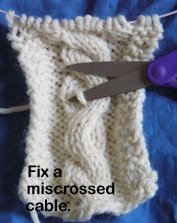.
One
of the things I totally love about this Massive Open Online Class way of learning
is how easy it is to pause the video and answer my own questions. I can't always find the answer to my questions, but
often, I can............................. This ability to stop, right when I have a question, and find an answer to my question (and maybe learn a few other things I wasn't even looking for!) seriously enriches my experience.
Here's an excerpt from my notes for Fundamentals of Neuroscience..... The first sentence is a direct quote from the instructor. Everything green is me -- questions, comments.......
--------
So we see that there's nothing intrinsically
'directional' about axons that causes propagation in just one
direction.
Ok, then, why do action potentials move from one end of
an axon to the other? Why aren’t they
sort of waving back and forth and canceling each other out? Is this because the refractory period stops
that waving back and forth?
Wikipedia: Action potentials occur in several
types of animal cells, called excitable cells,
which include neurons, muscle cells, and endocrine cells, as well as in some plant cells. In neurons, they play a central role
in cell-to-cell communication. In other types of cells, their main function is
to activate intracellular processes. In muscle cells, for example, an action
potential is the first step in the chain of events leading to contraction. In beta cells of the pancreas, they provoke release of insulin.
Wikipedia: As an action
potential travels down the axon, there is a change in polarity across the
membrane. The Na+ and K+ voltage-gated ion channels open and close as
the membrane reaches the threshold potential, in response to a signal from
another neuron. At the beginning of the action potential, the Na+ channels open
and Na+ moves into the axon, causing depolarization. Repolarization occurs when
the K+ channels open and K+ moves out of the axon. This creates a change in
polarity between the outside of the cell and the inside. The impulse travels down the axon in
one direction only, to the axon terminal where it signals other neurons.
Wikipedia: After an
action potential has occurred, there is a transient negative shift, called the hyperpolarization
or refractory period, due to additional potassium
currents. This is the
mechanism that prevents an action potential from traveling back the way it just
came. HAH!!!!!!!!
ps
– Wikipedia: In animal cells, there are two primary types
of action potentials. One type is generated by voltage-gated sodium channels,
the other by voltage-gated calcium channels.
Sodium-based action potentials usually last for under one millisecond, whereas
calcium-based action potentials may last for 100 milliseconds or longer. In
some types of neurons, slow calcium spikes provide the driving force for a long
burst of rapidly emitted sodium spikes. In cardiac muscle cells, on the other
hand, an initial fast sodium spike provides a "primer" to provoke the
rapid onset of a calcium spike, which then produces muscle contraction.
Of COURSE "only one sort of action potential" would be way too simple/easy/uncomplicated…………..
Of COURSE "only one sort of action potential" would be way too simple/easy/uncomplicated…………..
---
End of excerpt.
I just love learning about all of this stuff............. I am continually astonished at how complex it all is........
And at how old so much of it is. Many of the mechanisms that influence or control how things work in our cells are as old as "water molecules have a negative end and a positive end, and the positive end of a water molecule is attracted to the negative end of some other molecule, and vice versa".........................
Really, really old, this electromagnetic stuff. Four billion years? More I bet. Since before the beginning of time?
And Mama Nature has woven the most basic fabric of our beings from this ancient -- older than ancient -- sort of truth........
Awesome.
.
End of excerpt.
I just love learning about all of this stuff............. I am continually astonished at how complex it all is........
And at how old so much of it is. Many of the mechanisms that influence or control how things work in our cells are as old as "water molecules have a negative end and a positive end, and the positive end of a water molecule is attracted to the negative end of some other molecule, and vice versa".........................
Really, really old, this electromagnetic stuff. Four billion years? More I bet. Since before the beginning of time?
And Mama Nature has woven the most basic fabric of our beings from this ancient -- older than ancient -- sort of truth........
Awesome.
.

















2 comments:
I wouldn't have been able to follow any of what you said without having seen the YourTube Crash Course videos on anatomy and physiology. (The nervous system ones start here.)
Certainly not as in depth a treatment as what you are getting, but a wonderful introduction to all the intricacies.
Innit cool what you can learn online???????????????????????? Without leaving the comfort and of your own study???? :-) :-)
This is my third neurobio class. So interesting -- which things different people decide they can -- or can't -- leave out. And/or grossly simplify.....
The other two classes each had a different focus. The first one on "understanding the brain" -- the whole body was involved -- brain/body interactions. Her day job is teaching neuroanatomy to medical students, so there was a huge emphasis on "and when this goes wrong, here's what breaks." Disturbing.............. Interesting, but disturbing.........
And the second class was on "the brain in space" -- how we know where we are, and where everything else is, in relation to us.... Much emphasis on senses and how they work. Hearing, especially, is very tricky. Vision vastly more straightforward..............
So far this class has been all neurons, all the time. And we haven't even gotten down to the far end of the axon yet -- there are a number of things I want to know about that part of things, like who makes the neurotransmitters, and how they get into the vesicles......
I'd heard about action potentials in both of the other classes, but this one is really going in much greater depth.
They have a bunch of interactive things for us -- messing with membrane conductance and axial resistance (down the axon), to see what makes a signal propagate down the axon slower or faster. The interactives are really useful, I think. Rather than someone just showing you one or two things, you can try as many different ideas as you have, to see how membrane capacitance and axial resistance work separately, and how they interact...............
In the Brain and Space, at the very end of the class, she talked about the latest research on learning, and how we get info from the outside world into persistent memory. Using more sensory modalities seems to get things more deeply ingrained in our memories. At least, that's what I remember she said............... lol................
This neuroscience class is full of animations of various sorts, showing how things happen, in pictures, as well as the prof talking, and in addition to the interactives for us to play with.
It's an impressive class.
And he takes us on field trips. :-) We went to the Boston Science Museum (to look at its huge van de Graaff generator and talk about electricity), and to the Aquarium, to look at fishes that make neurotoxins (which happen to block the voltage-gated sodium channels)...... Those were extra fun for me because I've been to both of those places, when we were in Boston for bridge tournaments........... :-) We went to the electricity show at the museum. :-) I don't remember seeing the puffer fish at the aquarium, but we saw an octopus! A big one, getting petted by a person, and apparently loving it. :-) The first time I'd seen an invertebrate apparently happily interacting with a person........ In fact, the only time......
Post a Comment